Post-Emergent Control of Nuisance Cones in Fraser Fir Christmas Tree Plantations
Abstract
:1. Introduction
2. Materials and Methods
2.1. 2016 Trial
2.1.1. Study Locations
2.1.2. Study Design and One Treatments
2.1.3. Evaluations
2.1.4. Statistical Analysis
2.2. 2017 Trial
2.2.1. Study Locations
2.2.2. Study Design and Cone Treatments
2.2.3. Evaluations
2.2.4. Statistical Analysis
3. Results
3.1. 2016 Trial
3.2. 2017 Trial
4. Discussion
5. Conclusions
Author Contributions
Acknowledgments
Conflicts of Interest
References
- Burns, R.M.; Honkala, B.H. Silvics of North America. Volume 1. Conifers. In Agriculture Handbook 654; US Department of Agriculture: Washington, DC, USA, 1990; 675p. [Google Scholar]
- Powell, G.R. Biennial strobilus production in balsam fir: A review of its morphogenesis and a discussion of its apparent physiological basis. Can. J. For. Res. 1977, 7, 547–555. [Google Scholar] [CrossRef]
- Crain, B.A.; Cregg, B.M. Regulation and Management of Cone Induction in Temperate Conifers. For. Sci. 2018, 64, 82–101. [Google Scholar] [CrossRef]
- Crain, B.A.; Cregg, B.M. Gibberellic acid inhibitors control height growth and cone production in Abies fraseri. Scandinavian J. For. Res. 2017, 32, 391–396. [Google Scholar] [CrossRef]
- Owen, J. Using Herbicides to Interrupt Cone Development on Fraser Fir. In 12th International Christmas Tree Research and Extension Conference; Talgø, V., Fløistad, I.S., Eds.; Norwegian Institute of BioEconomy Research NIBIO: Ås, Norway, 2015; Volume 1, p. 41. [Google Scholar]
- Dayan, F.E.; Cantrell, C.L.; Duke, S.O. Natural products in crop protection. Bioorg. Med. Chem. 2009, 17, 4022–4034. [Google Scholar] [CrossRef] [PubMed]
- Dayan, F.E.; Duke, S.O. Natural compounds as next-generation herbicides. Plant Physiol. 2014, 166, 1090–1105. [Google Scholar] [CrossRef] [PubMed]
- Coleman, R.; Penner, D. Desiccant activity of short chain fatty acids. Weed Technol. 2006, 20, 410–415. [Google Scholar] [CrossRef]
- Coleman, R.; Penner, D. Organic acid enhancement of Pelargonic acid. Weed Technol. 2008, 22, 38–41. [Google Scholar] [CrossRef]
- Owens, J.N.; Molder, M. Vegetative bud development and cone differentiation in Abies amabilis. Can. J. Bot. 1977, 55, 992–1008. [Google Scholar] [CrossRef]
- Owens, J.N.; Singh, H. Vegetative bud development and the time and method of cone initiation in subalpine fir (Abies lasiocarpa). Can. J. Bot. 1982, 60, 2249–2262. [Google Scholar] [CrossRef]
- Owen, J. Fraser fir cone control update. In Abstracts of 13th International Christmas Tree Research and Extension Conference; Icelandic Forest Service: Akureyri, Iceland, 2017; p. 49. [Google Scholar]
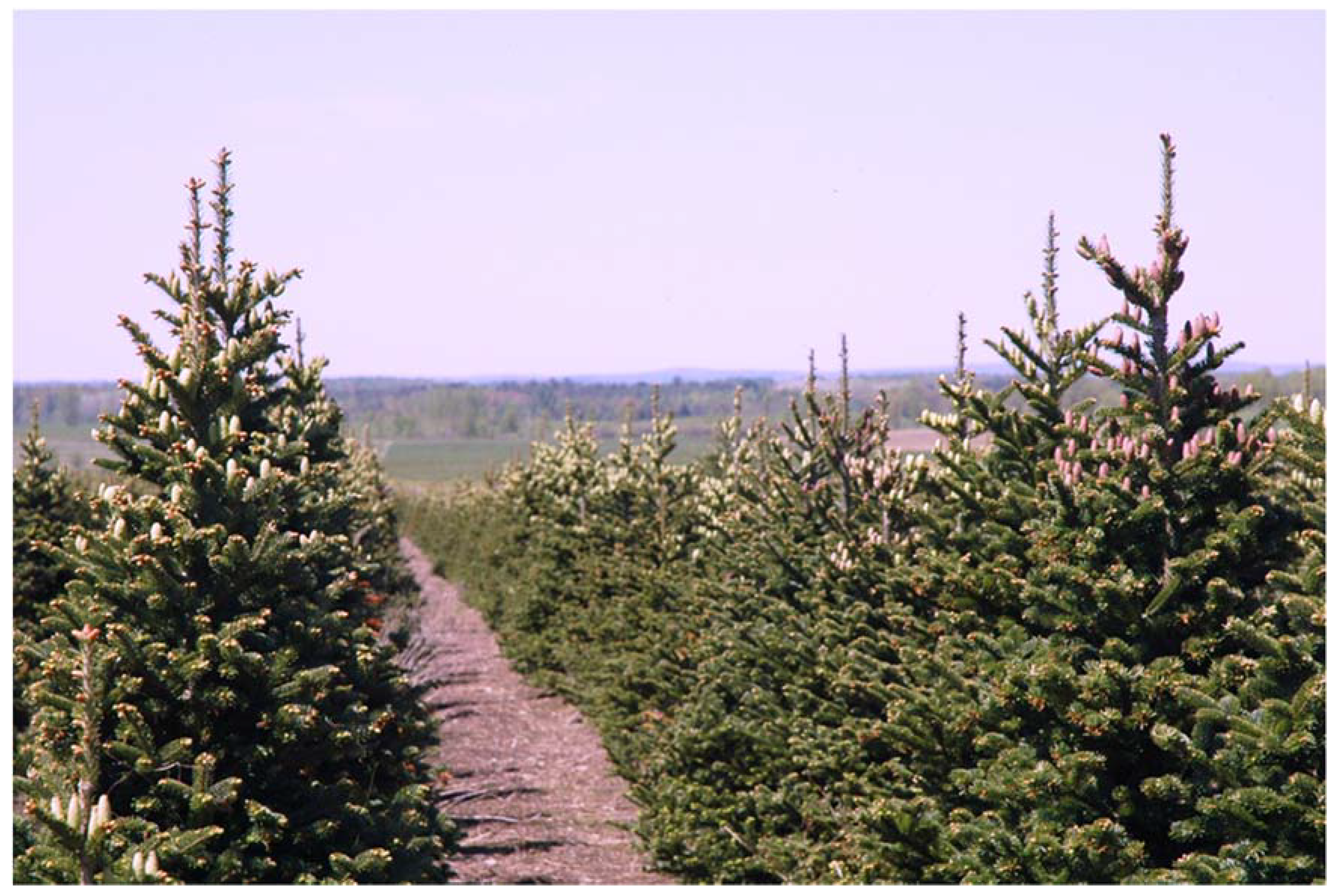
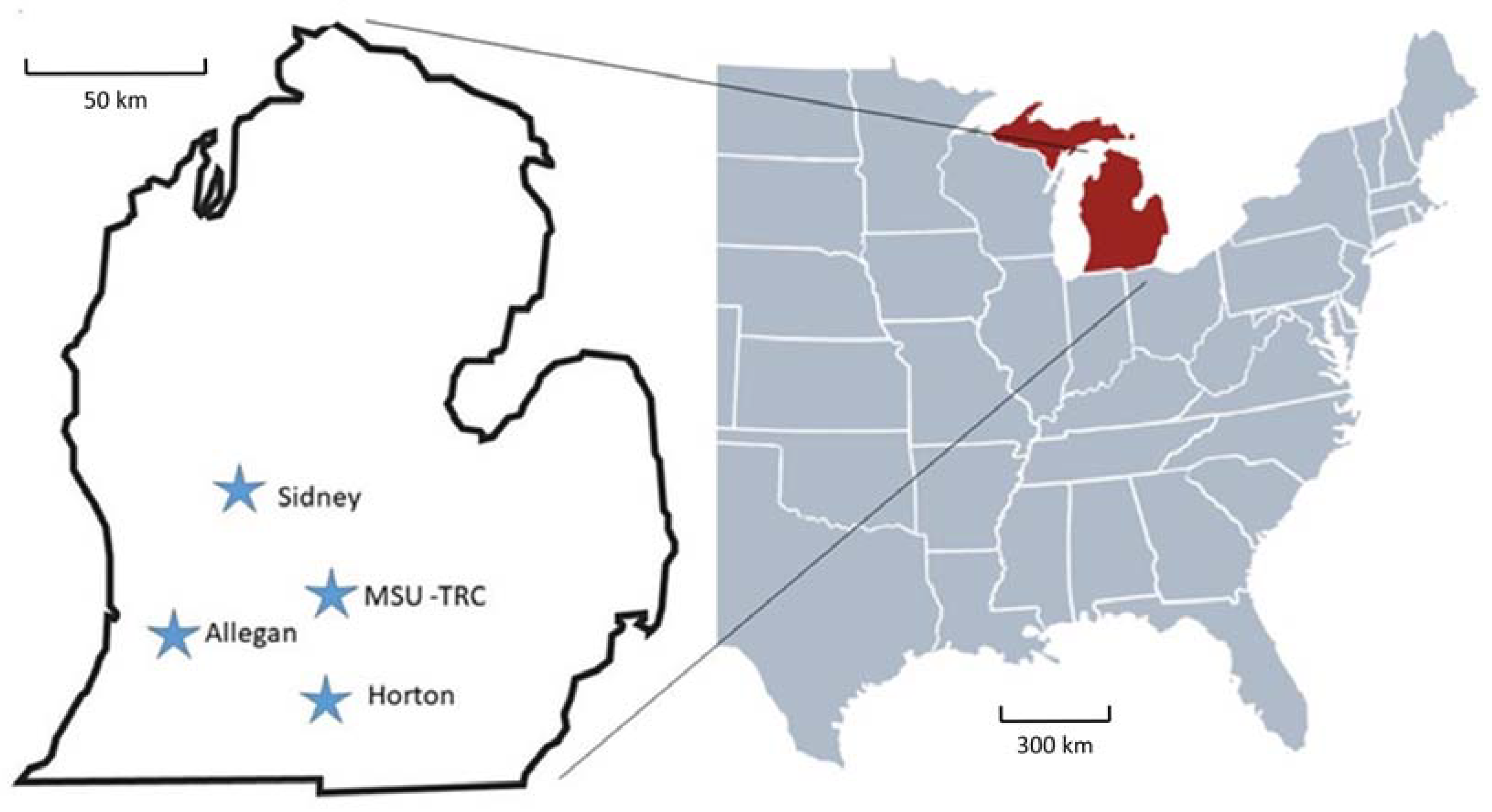
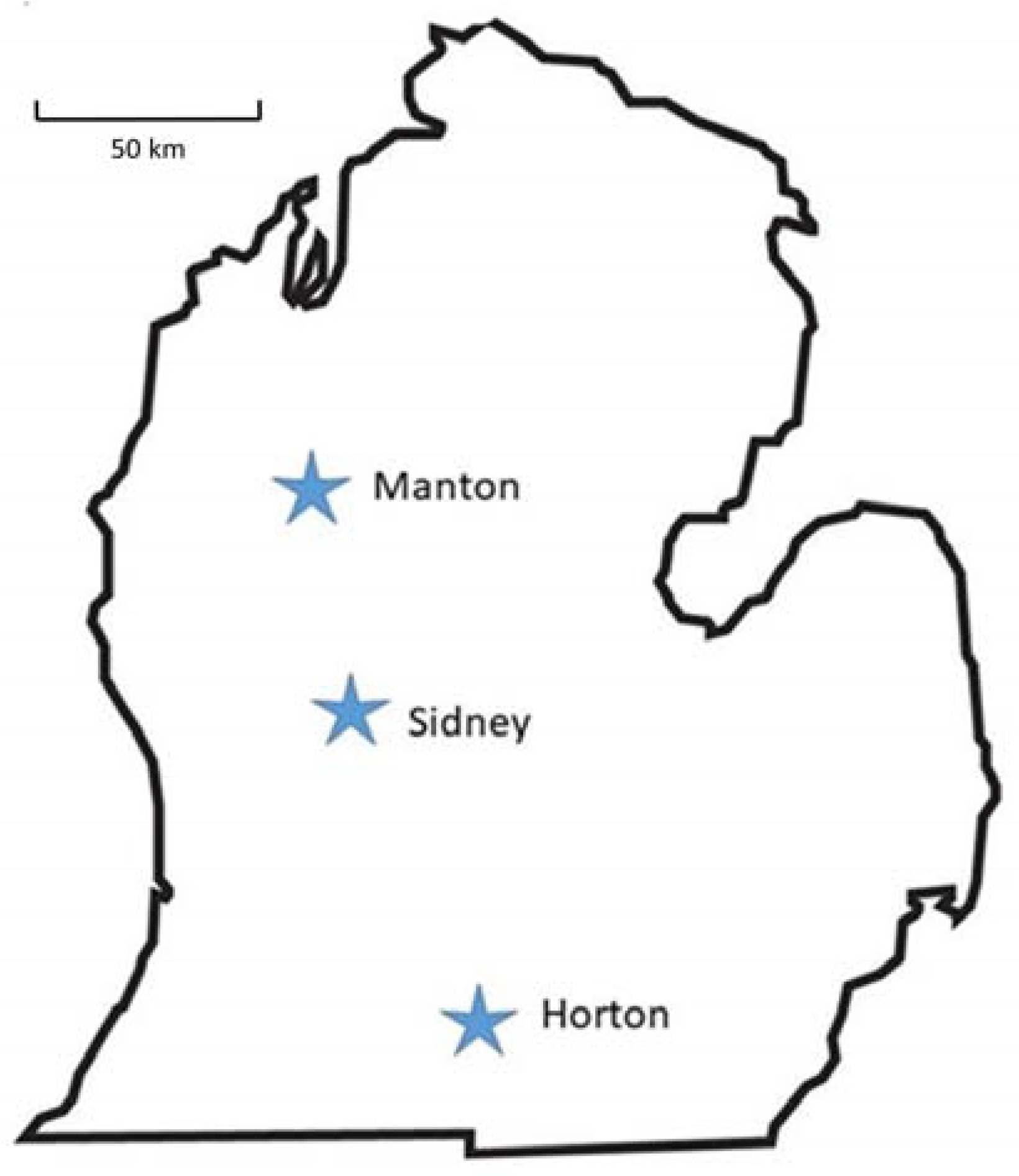

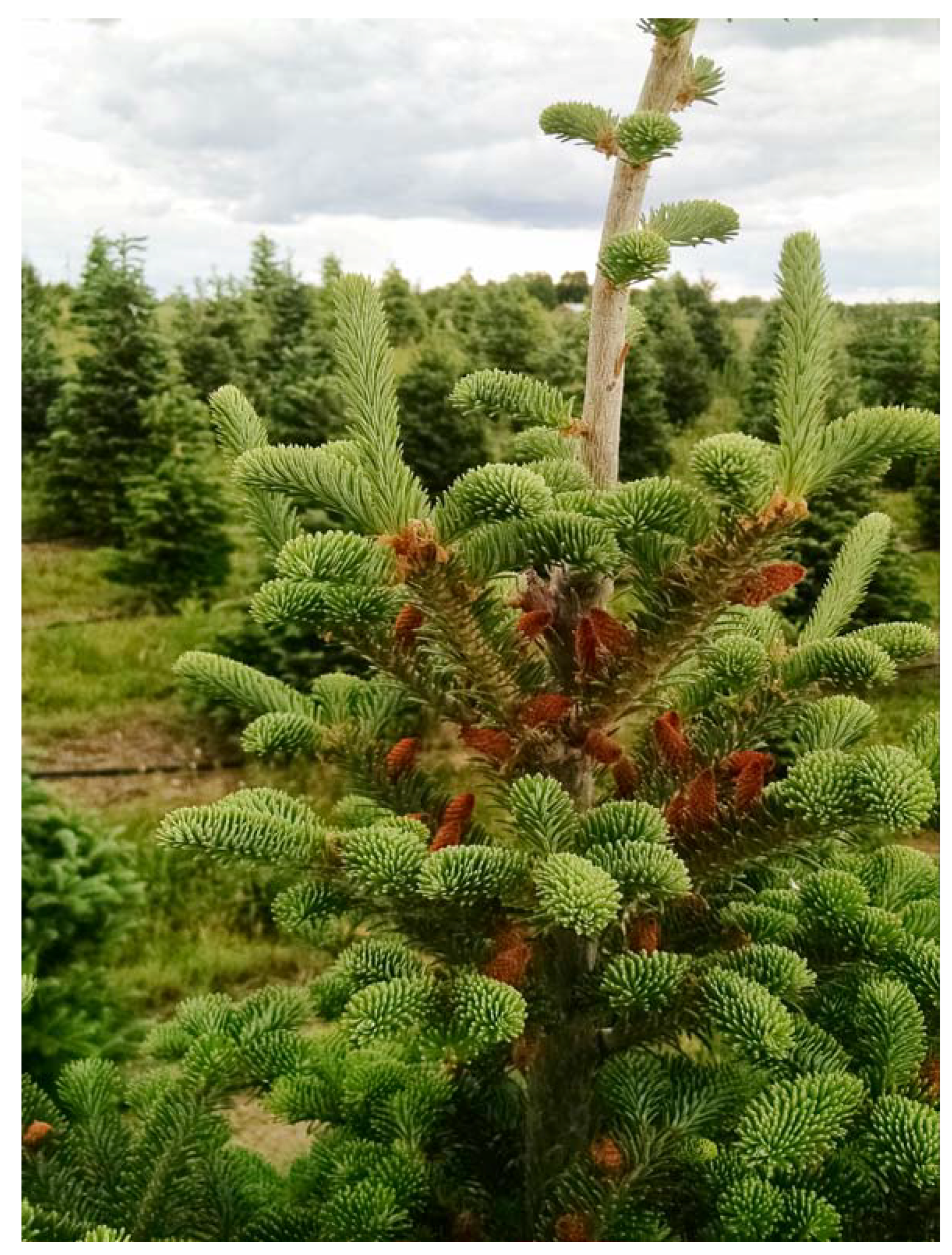
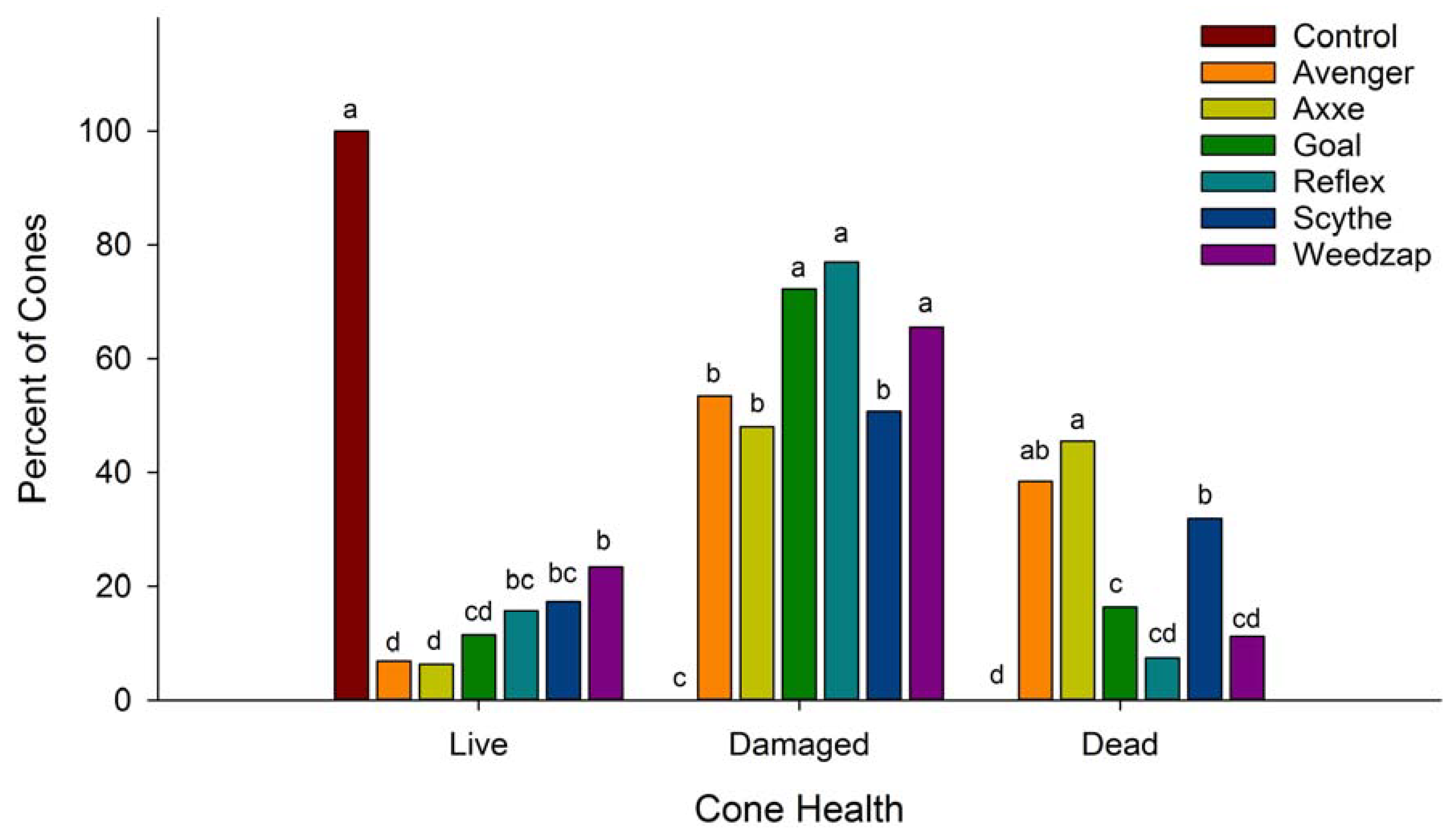
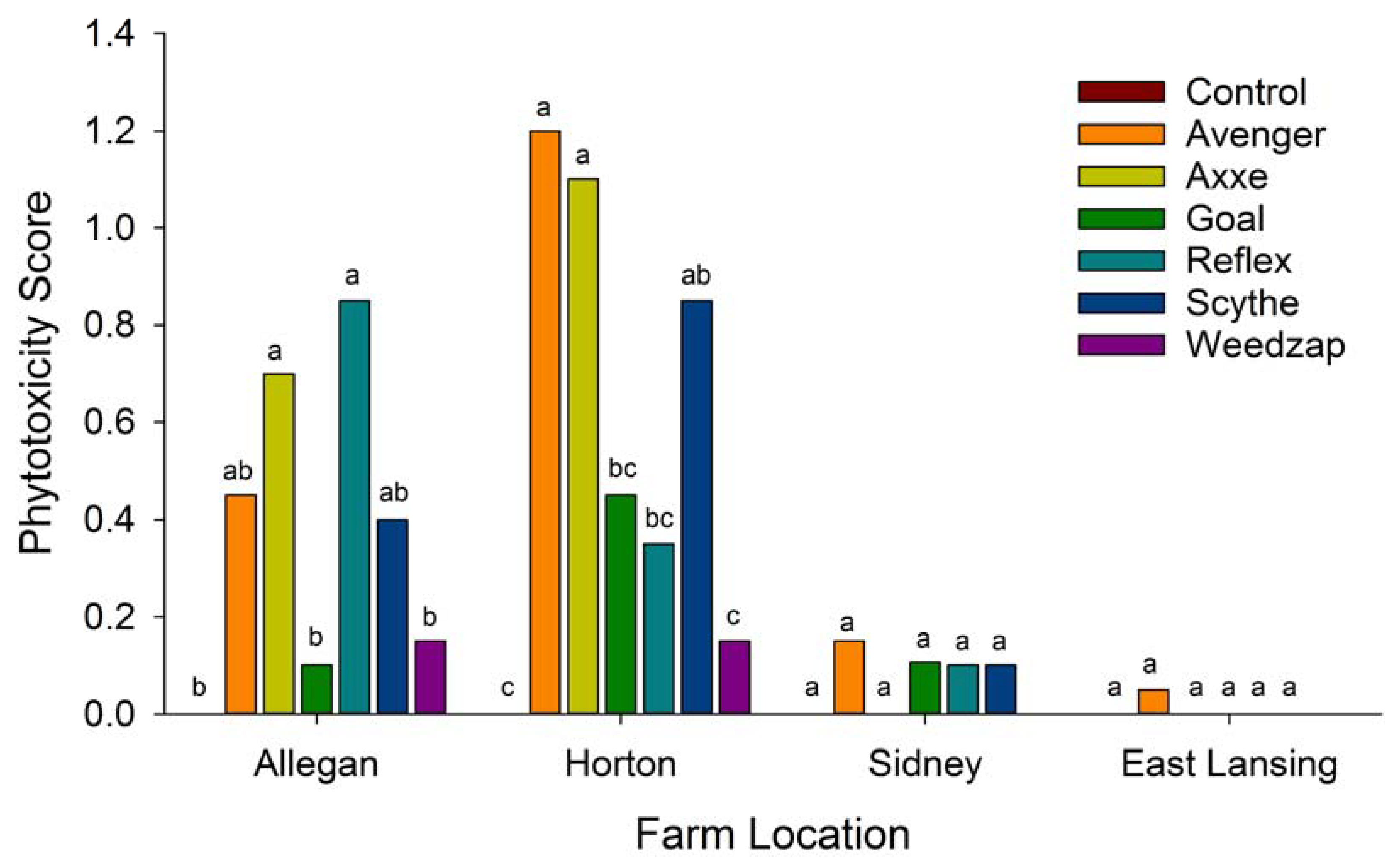
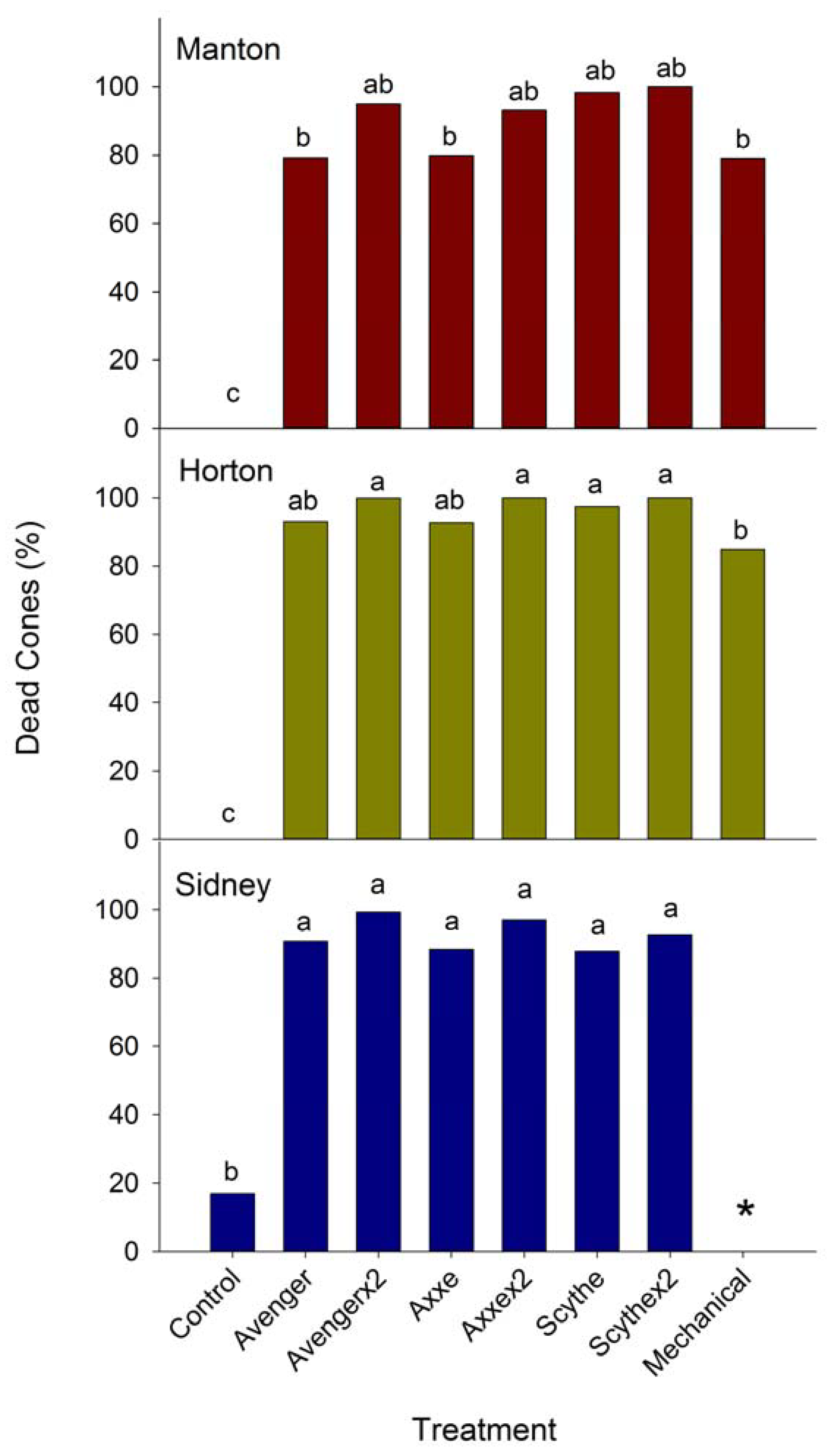
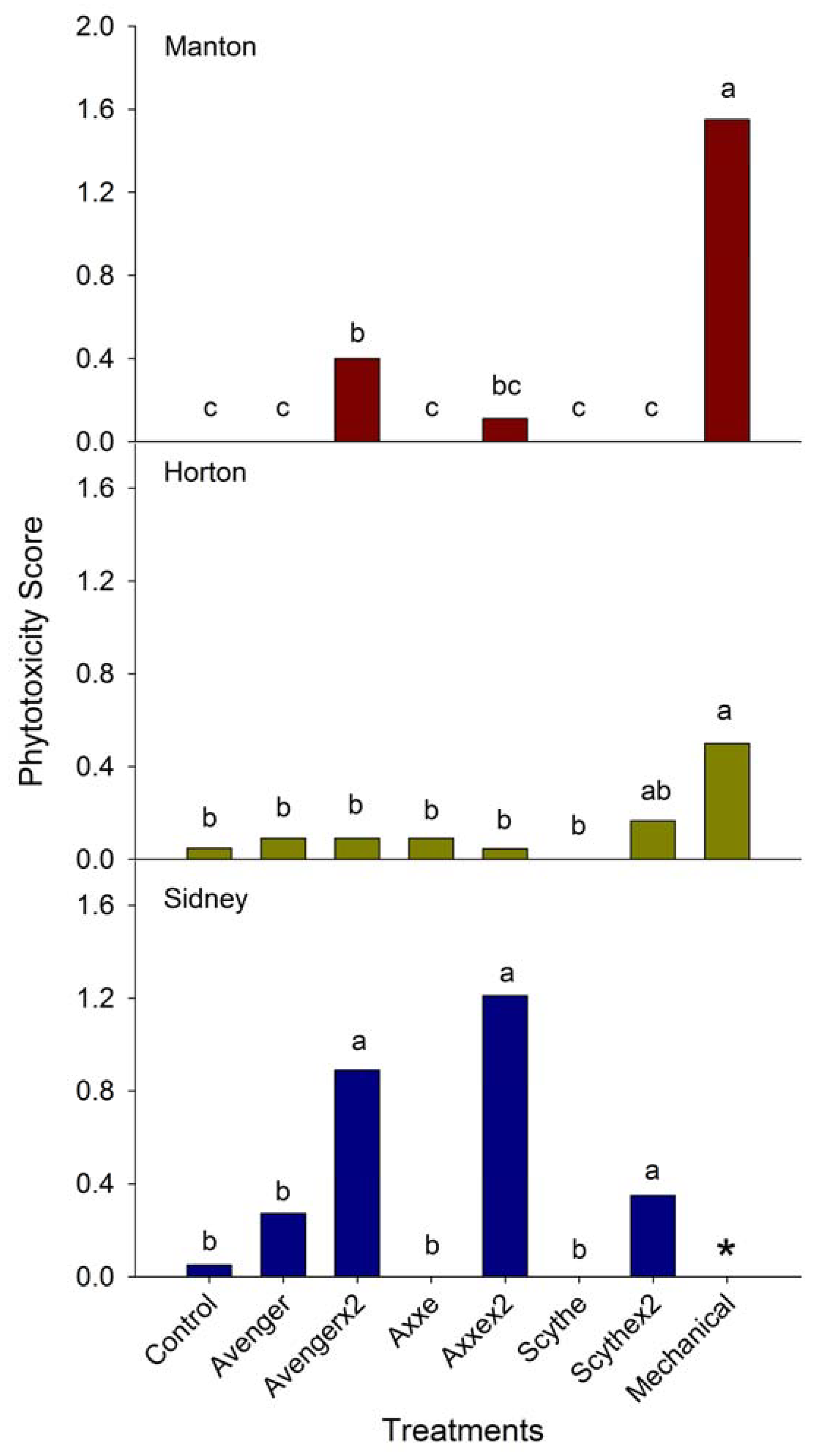
| Location | Application Date | Max Air Temp C | Wind m/s | Station 1 | GPS |
|---|---|---|---|---|---|
| Allegan, MI | May 19 | 22.6 | 2.1 | Allegan | 42.5292° N, 85.8553° W |
| Horton, MI | May 18 | 19.1 | 2.1 | Leslie | 42.4514° N, 84.4325° W |
| Sidney, MI | May 17 | 18.5 | 2.3 | Entrican | 43.2925° N, 85.0814° W |
| East Lansing, MI | May 13 | 17.1 | 4.7 | MSU-HTRC | 42.6406° N, 84.5153° W |
| Product | Manufacturer | Description | Type | Rate |
|---|---|---|---|---|
| Avenger | Cutting Edge Formulations, Buford, GA | d-limonene (citrus oil) | Organic | 250 mL/L |
| Axxe | BioSafe Systems, LLC, East Hartford, CT | ammonium nonanoate (ammonium salt of pelargonic acid) | Organic | 100 mL/L |
| Goal | Dow AgroSciences LLC, Indianapolis, IN | oxyfluorfen (pre/post emergent herbicide) | Conventional | 50 mL/L |
| Reflex | Syngenta Crop Protection, LLC, Greensboro, NC | sodium salt of fomesafen (pre/post emergent herbicide) | Conventional | 20 mL/L |
| Scythe | Gowan Company, Yuma, AZ | pelargonic acid | Organic | 50 mL/L |
| WeedZap | JH Biotech, Inc., Ventura, CA | Cinnamon oil + clove oil | Organic | 50 mL/L |
| Control | na | untreated | untreated | na |
| Treatment | Manufacturer | Product | Description | Rate |
|---|---|---|---|---|
| Avenger Avenger ×2 * | Cutting Edge Formulations, Buford, GA | Avenger | d-limonene (citrus oil) | 250 mL/L |
| Axxe Axxe ×2 | BioSafe Systems, LLC, East Hartford, CT | Axxe | ammonium nonanoate (ammonium salt of pelargonic acid) | 100 mL/L |
| Scythe Scythe ×2 | Gowan Company, Yuma, AZ | Scythe | pelargonic acid | 50 mL/L |
| Mechanical | BlossomCinch, Manistee, MI | na | Mechanical cone removal | na |
| Control | na | na | untreated | na |
| Location | Application Date | Max Air Temp C | Wind m/s | Station 1 | GPS |
|---|---|---|---|---|---|
| Horton, MI | May 3 | 15.8 | 2.3 | Leslie | 42.4514° N, 84.4325° W |
| Horton, MI | May 10 | 20.7 | 2.3 | Leslie | |
| Sidney, MI | May 3 | 15.6 | 1.6 | Entrican | 43.2925° N, 85.0814° W |
| Sidney, MI | May 16 | 29.5 | 3.0 | Entrican | |
| Manton, MI | May 15 | 24.5 | 1.1 | Arlene | 44.3900° N, 85.2867° W |
| Manton, MI | May 22 | 17.6 | 4.7 | Arlene |
© 2018 by the authors. Licensee MDPI, Basel, Switzerland. This article is an open access article distributed under the terms and conditions of the Creative Commons Attribution (CC BY) license (http://creativecommons.org/licenses/by/4.0/).
Share and Cite
Cregg, B.; Ellison, D.; O’Donnell, J. Post-Emergent Control of Nuisance Cones in Fraser Fir Christmas Tree Plantations. Forests 2018, 9, 233. https://doi.org/10.3390/f9050233
Cregg B, Ellison D, O’Donnell J. Post-Emergent Control of Nuisance Cones in Fraser Fir Christmas Tree Plantations. Forests. 2018; 9(5):233. https://doi.org/10.3390/f9050233
Chicago/Turabian StyleCregg, Bert, Dana Ellison, and Jill O’Donnell. 2018. "Post-Emergent Control of Nuisance Cones in Fraser Fir Christmas Tree Plantations" Forests 9, no. 5: 233. https://doi.org/10.3390/f9050233
APA StyleCregg, B., Ellison, D., & O’Donnell, J. (2018). Post-Emergent Control of Nuisance Cones in Fraser Fir Christmas Tree Plantations. Forests, 9(5), 233. https://doi.org/10.3390/f9050233




